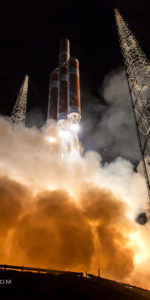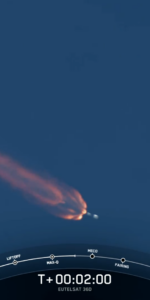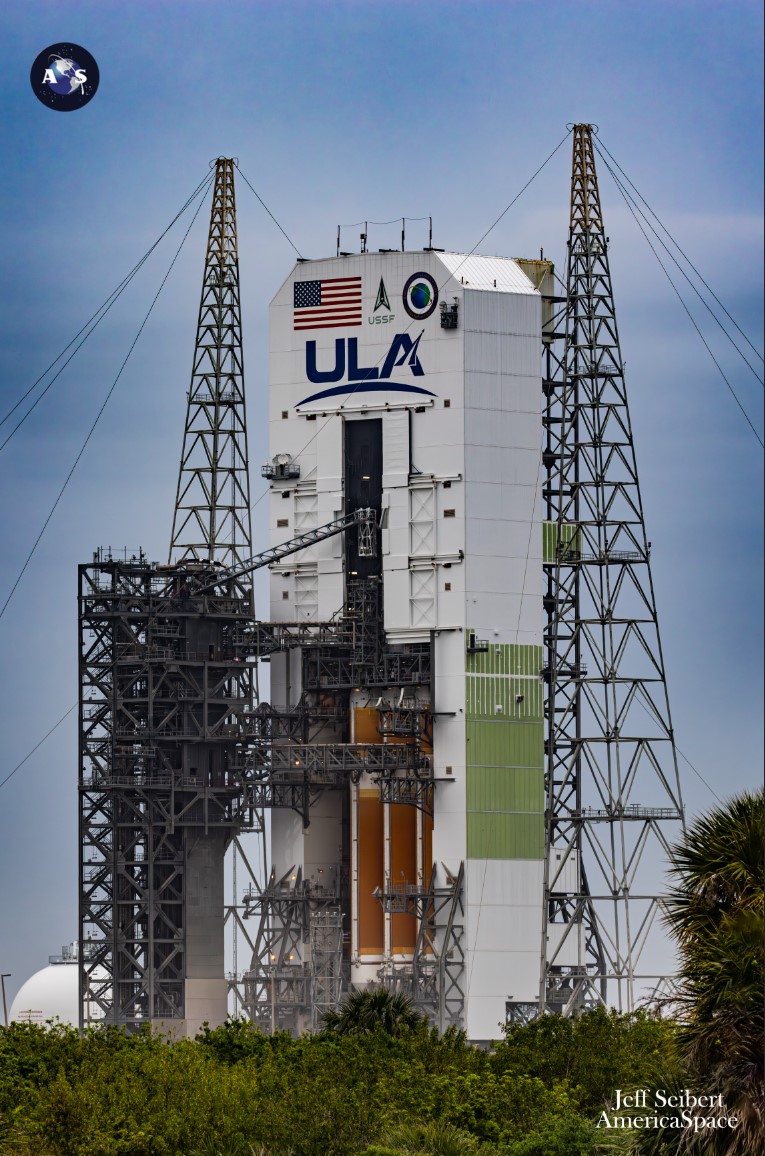
After more than six decades of operational service, 388 flights launched since May 1960 and an impressive 95-percent success rate, the final curtain-call for the Delta Program must await another day as United Launch Alliance (ULA) scrubbed its first attempt to get the last Delta IV Heavy rocket airborne. Despite only 30-percent-favorable weather odds, the countdown proceeded past the final built-in hold at T-4 minutes, only to be halted in an ominous “Hold, Hold, Hold” call a couple of seconds later. Teams will realign for a backup “launch window” that opens at 1:37 p.m. EDT Friday.
Styled by ULA as its “Most Metal” of rockets, the triple-barreled Delta IV Heavy was until February 2018 the world’s most powerful in-service operational launch vehicle, its three Common Booster Cores (CBCs)—each equipped with a single Aerojet Rocketdyne-built RD-68A engine—producing a liftoff yield of 2.1 million pounds (1 million kilograms). The triple-barreled behemoth entered service in December 2004 and with NROL-70 has logged 16 launches, delivering 12 NRO payloads, the final Defense Support Program (DSP) early-warning satellite in November 2007, the Exploration Flight Test (EFT-1) of NASA’s Orion spacecraft in December 2014 and the Parker Solar Probe in August 2018.
Primary payload for the Heavy’s final voyage was NROL-70, the fifth and last mission under a $1.18 billion Launch Operations Support (LOPS) contract modification awarded by the Space and Missile Systems Center (SMC), in partnership with the NRO, to ULA in September 2019. The contract followed on the heels of an earlier Launch Vehicle Production Services (LVPS) contract awarded in October 2018 for a group of highly classified NRO payloads dedicated to national security: the many-times-delayed NROL-44, which finally flew in December 2020, NROL-82, launched in April 2021, NROL-91 in September 2022—the final Delta IV Heavy launch out of Vandenberg Space Force Base, Calif.—and most recently last June’s NROL-68 from the Space Coast.
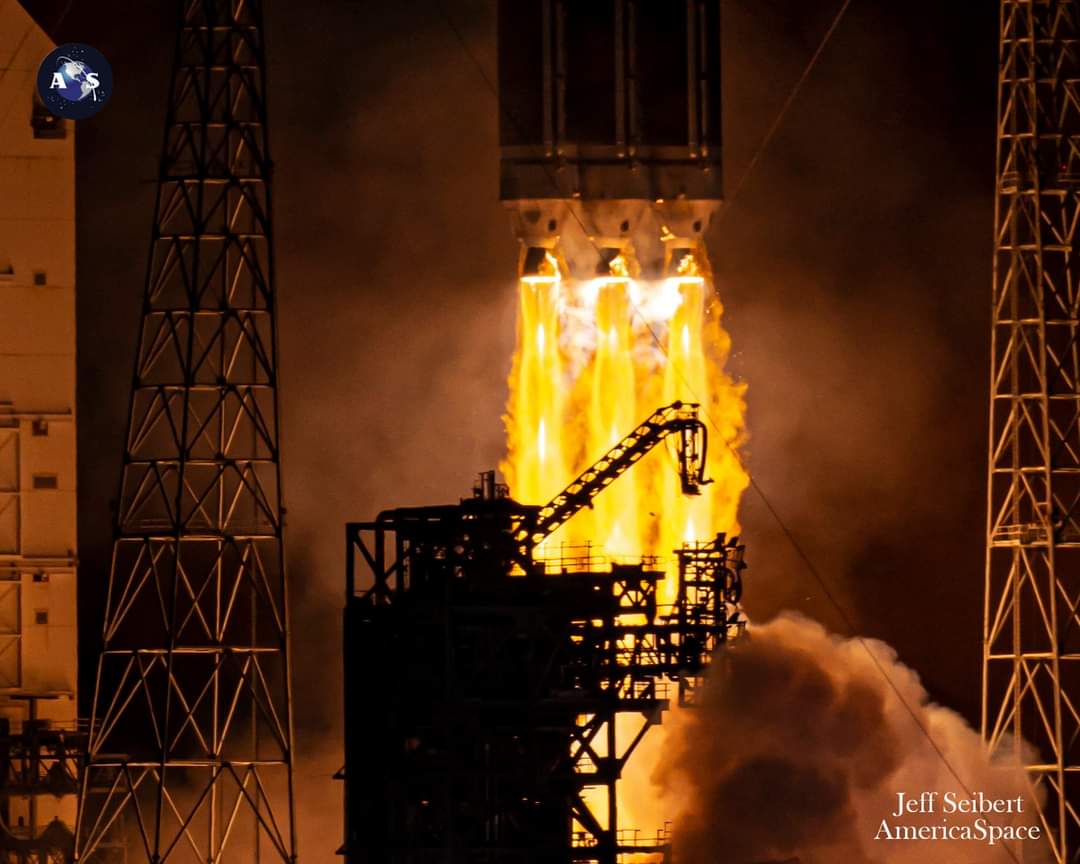
Delta IV Heavy hardware for NROL-70 began arriving at the Cape in May of last year, when the 134-foot-long (40.8-meter) center, port and starboard Common Booster Cores (CBCs) were delivered from ULA’s Decatur, Ala., manufacturing facility to the wharf at Port Canaveral, aboard the R/S RocketShip vessel. Over the next several months, the center core was mated with the port and starboard CBCs, followed by the 45-foot-long (13.7-meter) Delta Cryogenic Second Stage (DCSS), inside the Horizontal Integration Facility (HIF). Also completed in the HIF, the Launch Mate Unit (LMU) was fastened to the three CBCs to serve as a structural base when it stands atop SLC-37B’s launch table.
Last 19 December, the 170-foot-long (51.8-meter) integrated CBC/DCSS stack—minus its payload fairing—was transferred horizontally via a 36-wheeled, diesel-powered transporter from the HIF to the pad. It was raised vertical the next day as part of the Launch Vehicle On Stand (LVOS) milestone and on 26 February the 65-foot-long (19.8-meter) “trisector” Payload Fairing (PLF) which encapsulates the NROL-70 spacecraft was added, topping-out the stack at 235 feet (72 meters) high.
On Sunday, ULA and the NRO jointly announced on X that teams were targeting at T-0 point at 1:40 p.m. EDT Thursday. And on Wednesday, key personnel gathered in ULA’s Delta Operations Center (DOC) at the Cape for the Launch Readiness Review (LRR), polling a unanimous “Ready” to proceed and signing the Launch Readiness Certificate.
The NROL-70 countdown operation began crisply at 5:10 a.m. EDT, at T-8 hours, with the powering-up of the rocket, testing of its guidance system and flight control checkouts ahead of fueling. The 330-foot-tall (100-meter) Mobile Service Tower (MST) began its quarter-mile-per-hour (0.4 km/h) rollback to expose the Delta IV Heavy at 6:09 a.m. EDT and reached its “hard-down” point, about a football field’s distance away from the rocket, by 6:52 a.m. EDT.
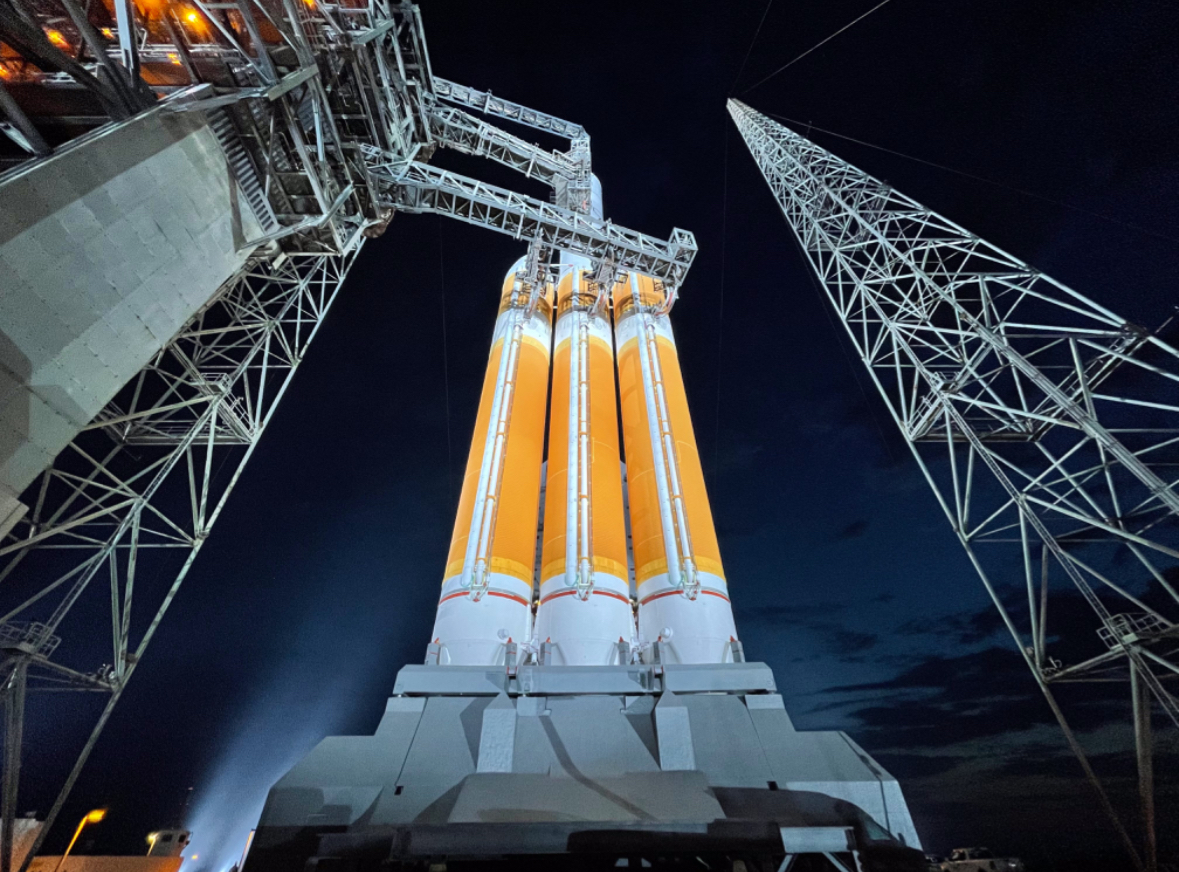
Led by Launch Conductor Scott Barney and Launch Director Tom Heter III, authorization was granted at 9:30 a.m. EDT to load the rocket with 330,000 gallons (1.2 million liters) of liquid hydrogen, chilled to -252 degrees Celsius (-423 degrees Fahrenheit) and 120,000 gallons (450,000 liters) of liquid oxygen, cooled to -183 degrees Celsius (-298 degrees Fahrenheit). As the countdown resumed from its first built-in hold, teams pressurized the liquid hydrogen storage tanks and charged high-pressure helium bottles on the first and second stages and cryogenic fueling commenced.
By 11 a.m. EDT, the pace of tanking picked up as propellant flow transitioned from a slow-fill to a fast-fill regime. Shortly afterwards, as teams started loading 6,000 gallons (27,000 liters) of liquid oxygen and 10,000 gallons (45,500 liters) of liquid hydrogen into the DCSS upper stage, ULA revealed—without elaboration—that it was tracking towards a slightly later T-0 point of 2:03 p.m. EDT, a target subsequently adjusted still further to the right to 2:45 p.m. EDT.
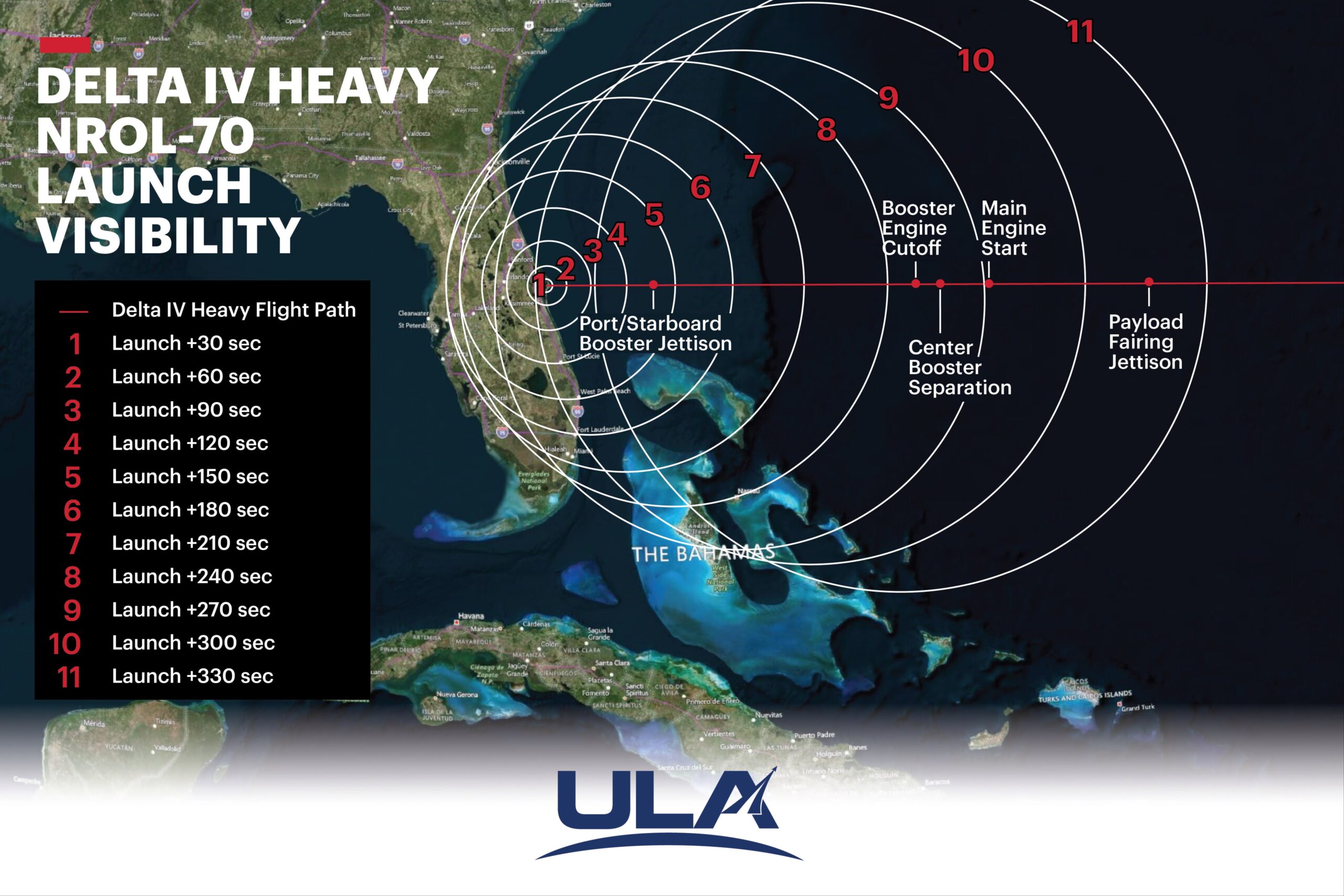
“The launch forecast remains at a 30-percent chance of allowable liftoff conditions, due to strong winds from the passage of a cold front,” ULA noted. “The outlook includes some scattered clouds, good visibility, northwesterly winds 25-30 knots and a temperature in the low 70s Fahrenheit.”
Passing 12 noon EDT, weather was still trending “Red” (“No-Go”), as a cold front moved quickly over the Cape and threatened violations of rules pertaining to cumulus clouds, disturbed weather and flight through precipitation. All Delta IV Heavy and ground-side systems were “Green” (“Go”) but at 12:47 p.m. EDT ULA declared that weather had moved to “Green”, although Launch Weather Officer Mark Burger reported that conditions remained close to the threshold for acceptable criteria.
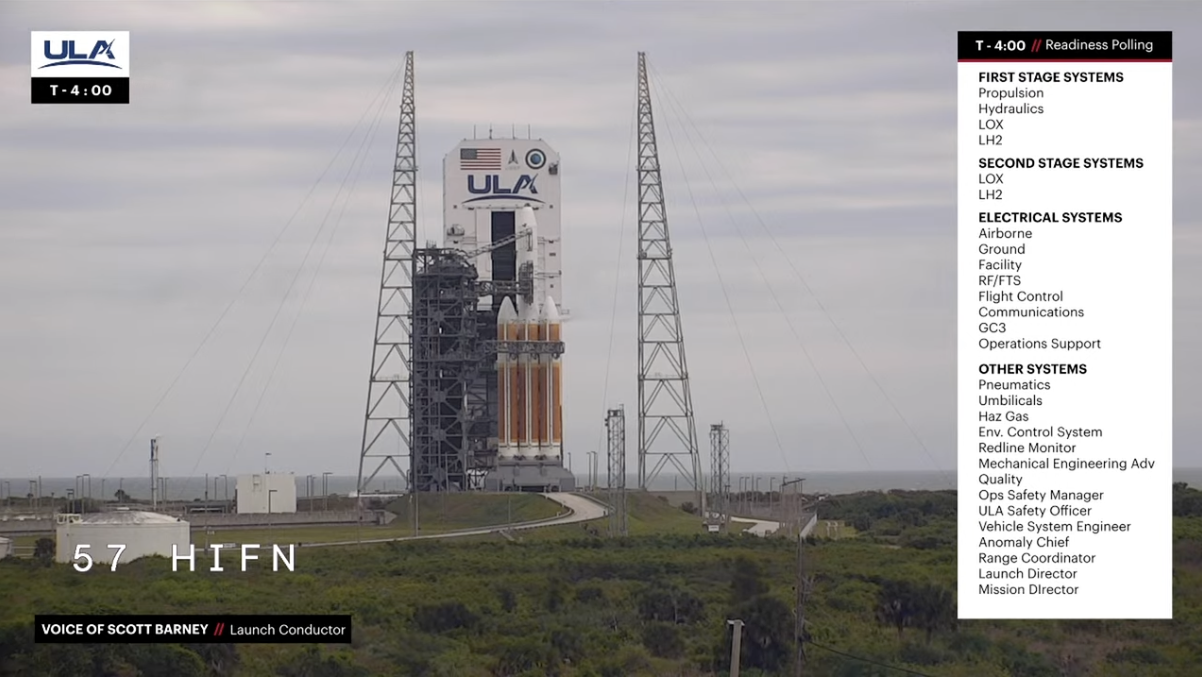
Mr. Barney led a poll of his two-dozen-strong launch team, which concluded with a string of “Go” calls across the board. The final permission to proceed with launch came from NRO Mission Director Col. Eric Zarybnisky.
The countdown clock resumed counting from the pre-planned hold at T-4 minutes at 2:41 p.m. EDT. No sooner had the countdown resumed, however, than an ominous “Hold, Hold, Hold” call echoed across the net at T-3 minutes and 58 seconds.
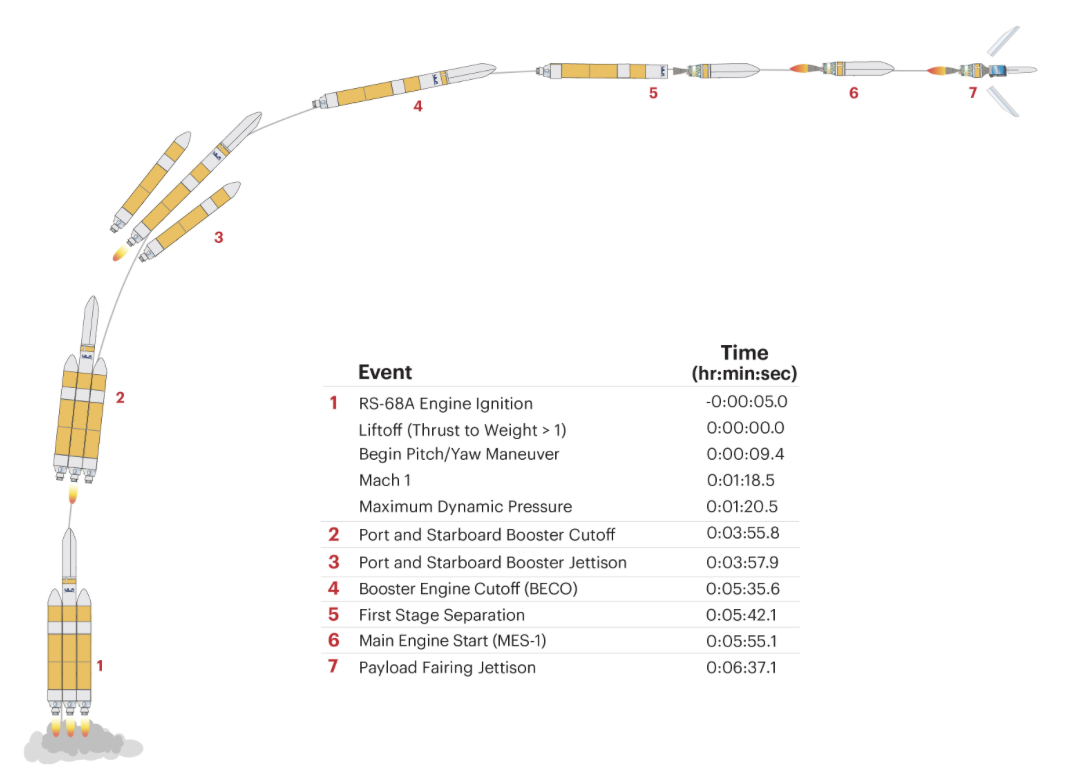
Clocks were reset to T-4 minutes and holding as a flurry of to-and-fro chatter progressed between flight controllers over the countdown net. Shortly thereafter, the onset of “detanking” the Delta IV Heavy was announced and teams entered a 24-hour recycle, aiming for a backup opportunity opening at 1:37 p.m. EDT Friday.




